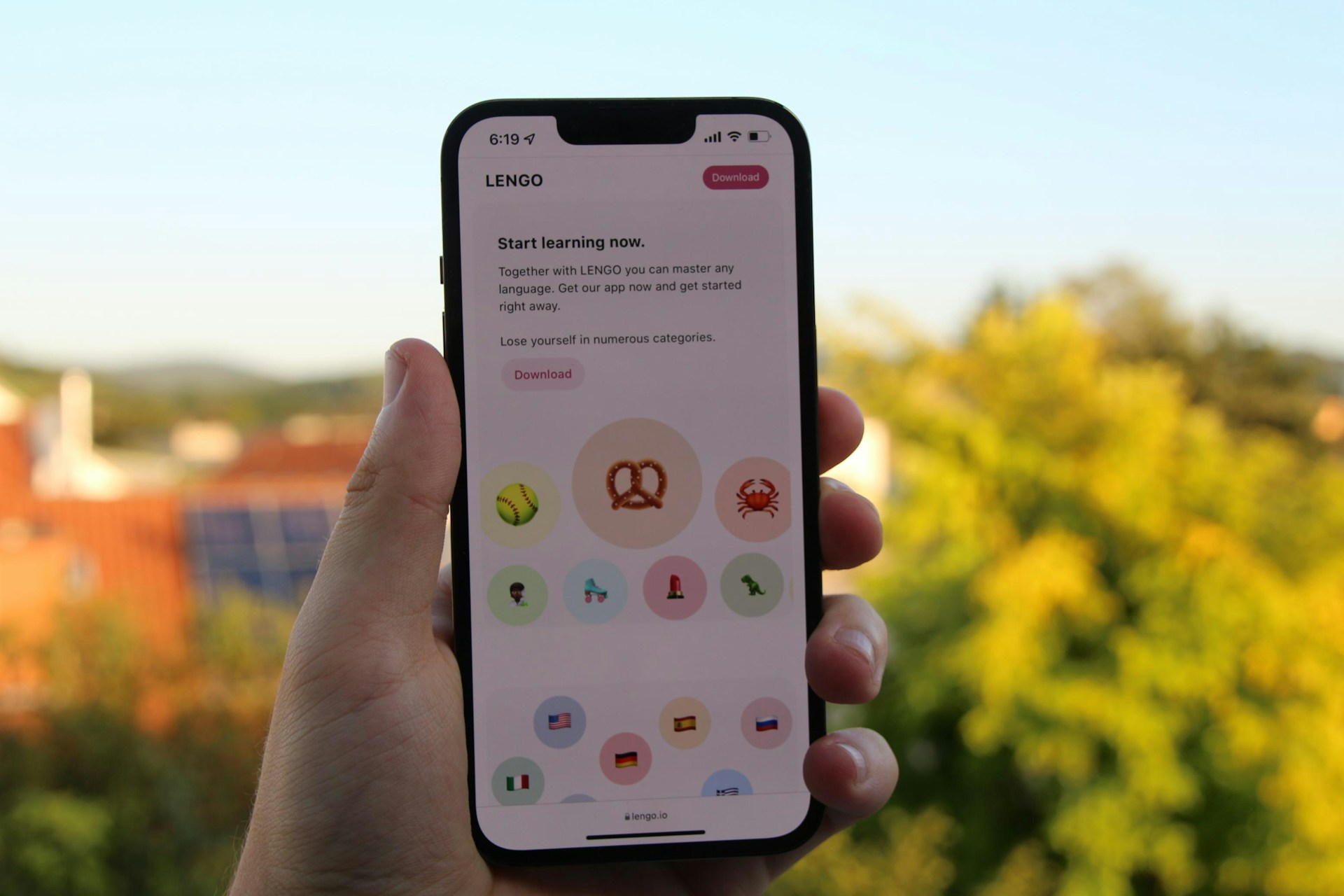Traveling abroad opens doors to new cultures, landscapes, and experiences. However, it also often brings us face-to-face with one of the most common challenges: language barriers. Whether it’s trying to navigate through a bustling city where signboards are in an unfamiliar script or attempting to order a meal in a local restaurant, the inability to communicate in the local language can transform simple tasks into daunting hurdles.
Despite these challenges, effective communication is not just about speaking fluently; it’s about connecting and understanding, which is essential for a fulfilling travel experience. Here we aim to equip travelers with practical strategies to overcome language barriers, ensuring their journeys abroad are as smooth and enriching as possible.
Understanding the Impact of Language Barriers

The Difficulties Travelers Face
Language barriers can present a variety of challenges to travelers, impacting almost every aspect of their journey. Navigation becomes a complex task when street signs, instructions, or transit schedules are in an unfamiliar language. Tourists may find themselves lost in translation, literally and figuratively, leading to significant time lost and potential safety risks, especially in emergency situations. Moreover, basic interactions, like asking for directions, shopping, or ordering food, can become sources of anxiety and frustration.
Cultural Misunderstandings
Beyond the practical difficulties, there’s a deeper layer of challenge involving cultural misunderstandings. Language is a vessel of culture, and not being able to communicate can sometimes lead to unintended offenses or misinterpretations of local customs and etiquette. This can range from using an inappropriate gesture to misunderstanding a local tradition, which might lead to awkward situations or even conflict. Such instances underscore the importance of not only learning the language but also understanding the cultural context in which it is used.
The Importance of Cultural Sensitivity
Effective communication in a different language is not just about the words spoken; it’s equally about understanding and respecting cultural nuances. Cultivating cultural sensitivity can lead to more meaningful interactions with locals, enhancing the travel experience. It involves being aware of and adapting to local customs, gestures, and norms. This awareness fosters a deeper connection with the local community, allowing travelers to experience a more authentic and enriching journey.
Pre-Trip Preparations
The Foundation of Communication
Before embarking on a journey abroad, learning basic phrases in the local language can be immensely beneficial. This preparation is not about achieving fluency but about building a bridge for basic communication. Essential phrases include greetings, common questions (like “Where is the bathroom?”), and expressions of gratitude (“Thank you”). Even a modest effort in speaking the local language can lead to more welcoming interactions, as it shows respect for the culture and a willingness to engage on a deeper level.
Resources for Language Learning
Fortunately, in the digital age, there are numerous resources available for learning new languages. Language learning apps like Duolingo or Babbel offer interactive courses tailored to different proficiency levels. For those who prefer traditional methods, phrasebooks are a handy tool, providing quick references to essential phrases and words. Online courses and tutorial videos can also be beneficial, especially for understanding pronunciation and basic grammar. Engaging with these resources, even for a short time each day, can significantly enhance your ability to navigate through language barriers.
Utilizing Technology

Harnessing the Power of Translation Apps
In an era where technology bridges numerous gaps, overcoming language barriers while traveling has become more manageable. Translation apps are a traveler’s best friend in this regard. Apps like Google Translate or Microsoft Translator can translate text, voice, and even images in real time. These tools are incredibly useful for understanding menus, signs, and instructions. Some apps also offer a conversation mode, allowing for a smoother dialogue between different language speakers. It’s advisable to download the necessary language packs for offline use, ensuring accessibility even in areas with limited internet connectivity.
Effective Use of Technology
While technology can be a great aid, it’s essential to use it wisely. Relying solely on electronic devices can sometimes hinder the opportunity to engage more deeply with the local culture and people. It’s best to use these tools as a complement to, rather than a replacement for, learning basic phrases and attempting to communicate directly. Additionally, travelers should be aware of the limitations of translation apps, such as inaccuracies in complex sentences or idiomatic expressions. Understanding these limitations helps in setting realistic expectations and using these tools more effectively.
Cultural Research
Understanding Cultural Norms and Non-Verbal Communication
A crucial aspect of preparing for international travel is understanding the cultural norms and non-verbal communication cues of your destination. This research goes beyond language and delves into the realm of gestures, body language, and social etiquette. In some cultures, for example, certain hand gestures considered benign in your home country might be offensive elsewhere. Similarly, concepts of personal space, eye contact, and even the way you hand over money can vary significantly from one culture to another.
Resources for Cultural Research
To equip yourself with this knowledge, a variety of resources are available. Travel guides and blogs often provide insights into local customs and etiquette. Watching videos or documentaries about your destination can offer a visual understanding of social interactions. Engaging in forums or social media groups dedicated to travel can also be enlightening, as you can learn from the experiences of others who have visited the same locations. Additionally, cultural exchange programs or language exchange meetups can provide first-hand experience and insights from natives or seasoned travelers.
Remember, the goal of this research is not to memorize every cultural nuance but to develop a general awareness and sensitivity that will guide your interactions. Being aware of and respectful towards local customs not only enriches your travel experience but also helps in building meaningful connections with the people you meet.
Strategies While Traveling

Non-Verbal Communication Techniques
When verbal communication falters, non-verbal cues become a universal language. Gestures, facial expressions, and body language can convey a wide range of messages, often transcending linguistic boundaries. Pointing to a map when asking for directions, using hand signals to indicate numbers when shopping, or simply smiling and nodding can effectively bridge the gap where words fail. It’s important, however, to be aware of the cultural connotations of certain gestures, as they can vary significantly across different societies.
Avoiding Misunderstandings
While non-verbal communication is powerful, it’s also prone to misunderstandings. A thumbs-up, for instance, might be seen as a positive gesture in many countries, but it can be offensive in others. Travelers should observe locals and possibly mimic their gestures in appropriate contexts. Also, combining gestures with simple verbal communication, like saying “yes” while nodding, can help in reinforcing the intended message and reducing ambiguity.
Seeking Local Assistance
Engaging with English-Speaking Locals and Guides
In many countries, especially in tourist-friendly areas, finding locals who speak English or other international languages can be relatively easy. Engaging with these individuals can significantly ease communication barriers. They can offer valuable insights, translate in more complex interactions, or even provide recommendations for places to visit. Additionally, hiring local guides who speak your language can enrich your travel experience, providing cultural context and detailed information about the sights and traditions of the place.
Building Rapport with Locals
Building rapport with locals can open doors to more authentic experiences and easier communication. Simple gestures of kindness, showing interest in their culture, or even trying to speak a few words in the local language can go a long way in establishing a connection. Often, locals are more patient and willing to help when they see genuine effort and respect from travelers.
Patience and Open-mindedness

The Role of Patience in Navigating Language Barriers
Dealing with language barriers requires patience. Misunderstandings and communication breakdowns are common, and it’s important to remain calm and composed in such situations. Patience not only helps in finding alternative ways to communicate but also in understanding and appreciating the differences in communication styles and cultural nuances.
Embracing Cultural Differences
Travel is as much about exploring new places as it is about encountering different ways of life. Open-mindedness and a willingness to embrace these differences are the key in overcoming language barriers. Viewing communication challenges as opportunities for growth and learning can transform potentially frustrating experiences into enriching ones. It’s about enjoying the process of cultural exchange and finding joy in the unique ways people connect across language divides.
Final Words
To sum up, overcoming language barriers while traveling requires a blend of preparation, strategy, and mindset. From learning basic phrases and utilizing technology to understanding cultural nuances and employing non-verbal communication techniques, there are multiple ways to navigate these challenges. Reflecting on your experiences and sharing them with others not only contributes to personal growth but also assists the wider traveler community. Embracing these strategies with patience and an open mind can transform potential obstacles into opportunities for deeper connection and understanding, making every journey abroad a richer and more fulfilling experience.


